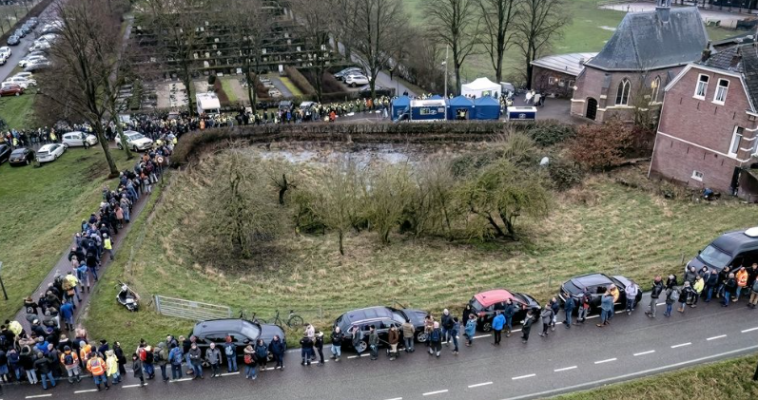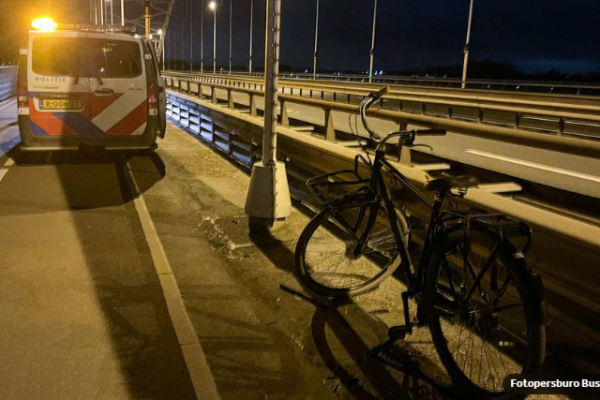ramonmercado
CyberPunk
- Joined
- Aug 19, 2003
- Messages
- 58,392
- Location
- Eblana
We should also remember the missing people who are never found because their bodies have been dissolved in fluoridated water.
Plenty of people tried to raise the alarm about Shipman including a taxi driver, an undertaker, hospital doctors and more than one other GP. The problem was that they weren't believed.Asking the right questions is very important, look at Harold Shipman for instance. I believe he had higher than average patient deaths but much of this could have been brushed away as elderly women dying peacefully at home.
Plenty of people tried to raise the alarm about Shipman including a taxi driver, an undertaker, hospital doctors and more than one other GP. The problem was that they weren't believed.
You mean, like English tap water? That's evil stuff, right enough.We should also remember the missing people who are never found because their bodies have been dissolved in fluoridated water.
I think another good way of looking at it would be to compare the number of water-based deaths in cities without universities or a large concentrate of student bodies, to the number of drowning-type deaths in cities with an equivalent number of canals but with universities.On balance I think these deaths are probably all accidents but there is still an element of doubt in my mind. It seems like there have been repeated 'spikes' in this type of death over recent years in various locations. Manchester and York have been mentioned but I seem to remember there were some in Durham too. I guess what I would like to know is (a) are these 'spikes' actually spikes in this specific type of death, and if so, what has changed to stop this from continuing or escalating? Are there better barriers or could it be improved public awareness? In terms of potential 'survivors' I know there was one report of a cyclist who reported that he'd been pushed into a canal by someone who tried to stop him from getting back out (could have been a one off but who knows).
Spookdaddy made some great points about the falibility of statistics. You can manipulate them into saying whatever you want them to, and with the best will in the world they can lead you to conclusions which don't truly reflect reality. If there is a serial killer on the loose then looking at whole population statistics to find statistically significant events would, in many cases, be a fools game.
Asking the right questions is very important, look at Harold Shipman for instance. I believe he had higher than average patient deaths but much of this could have been brushed away as elderly women dying peacefully at home. The real smoking gun was when they looked at the times when those patients died (largely in a cluster in the afternoon) which was very out of the ordinary and happened to coincide with when Shipman made his infamous house calls...
I'm also reminded of the alleged tube pusher serial killer Kieran Patrick Kelly who apparently got away with his crimes for many years. Whilst I'm not arguing for the serial killer theory, it's not unprecedented.
The problem is that some accusations are so awful that it's 'unthinkable'. Then, when the truth comes out, the backlash and criticism of the system goes into overdrive.Precisely - their fears were brushed away and shouldn't have been. A closer look at certain aspects, such as time of death, would have been impossible to ignore.
Oh, I could think it.
But I dont trust kids.
...I'm also reminded of the alleged tube pusher serial killer Kieran Patrick Kelly who apparently got away with his crimes for many years. Whilst I'm not arguing for the serial killer theory, it's not unprecedented.


We've discussed this before. It does of course bear further mention.There seem to have been a considerable amount of reports in the UK of a number of women who have disappeared, only to be found deceased days later. Is this a reflection of media reporting on these cases more since the Nicola Bulley disappearance, or are women going missing in such awful circumstances increasing?
A body has been found in the search for a missing 65-year-old woman from Norfolk.
The discovery was made at around 10.30am today in the Little Ouse River just south of Thetford Power Station.
I find these reports incredibly sad.Body found near Thetford in search for missing Kim Wilde
Not that one!
https://www.edp24.co.uk/news/24047934.body-found-near-thetford-search-missing-kim-wilde/
How sad. She was certainly missed and searched for.Body found near Thetford in search for missing Kim Wilde
Not that one!
https://www.edp24.co.uk/news/24047934.body-found-near-thetford-search-missing-kim-wilde/
The search did not yield any result, unfortunately.More than a thousand people search for missing boy (16), coat found in Merwede
A large search operation is under way in Sleeuwijk and the surrounding area for 16-year-old Yoran Krol. The teenager from the Brabant town has been missing for weeks. Organisers say 1,500 people are taking part in the search.
The volunteers are mainly searching along the water, in a radius of about 25 kilometres around the place where Yoran's bike was found. It was found on 24 December on the Merwedebrug near Sleeuwijk, along the A27 motorway. Yesterday, downstream in the Merwede, near Papendrecht, the boy's coat was found after a tip-off.
Today's search was set up by the Coordination Platform Missing, an organisation called in by the family and also working with the police. Earlier searches by the police including divers did not yield anything.
View attachment 72901
View attachment 72902
https://nos.nl/artikel/2504713-meer...ar-vermiste-jongen-16-jas-gevonden-in-merwede
That is true.It's been SO wet this autumn and winter that I wouldn't be surprised if there weren't extra deaths as people try to carry out their usual walks/shortcuts only to find them wetter, more slippery and maybe partly underwater when they aren't usually. How many people will turn back if faced with, say six inches of water across their usual path? I'd guess that most, if wearing wellies, will try to walk through. One slip - and it can be fatal.
I find this really sad. I always hope for a better outcome than the one I suspect might be coming.How sad. She was certainly missed and searched for.
This is the woman Escette knew -
Body found in river during search for missing Lucy Charles
We only hear about certain missing people and are told just a little of their story. The police must know the most likely outcome from the start.
It's been SO wet this autumn and winter that I wouldn't be surprised if there weren't extra deaths as people try to carry out their usual walks/shortcuts only to find them wetter, more slippery and maybe partly underwater when they aren't usually. How many people will turn back if faced with, say six inches of water across their usual path? I'd guess that most, if wearing wellies, will try to walk through. One slip - and it can be fatal.
It's been SO wet this autumn and winter that I wouldn't be surprised if there weren't extra deaths as people try to carry out their usual walks/shortcuts only to find them wetter, more slippery and maybe partly underwater when they aren't usually. How many people will turn back if faced with, say six inches of water across their usual path? I'd guess that most, if wearing wellies, will try to walk through. One slip - and it can be fatal.
Race course looked like a lake, last week. Drove past with son's gfriend who is from the Netherlands and she didn't believe us that it wasn't a lake.It's been SO wet this autumn and winter that I wouldn't be surprised if there weren't extra deaths as people try to carry out their usual walks/shortcuts only to find them wetter, more slippery and maybe partly underwater when they aren't usually. How many people will turn back if faced with, say six inches of water across their usual path? I'd guess that most, if wearing wellies, will try to walk through. One slip - and it can be fatal.
Our fields have been underwater for ages. It just drains and then it gets rained on again. Malton had to close loads of roads and set up pumps - I've nobody in York now so I don't get daily updates on the state of the river but I've never got over walking to the end of my daughter's road on Fishergate - and it being just river running past. And having seen videos of people standing at Scarborough and Whitby in the storms - too many people underestimate water and what it can do.Race course looked like a lake, last week. Drove past with son's gfriend who is from the Netherlands and she didn't believe us that it wasn't a lake.
Yup, people caught out by the flash floods might seem to disappear without a trace if there are no survivors.I've long been aware of the danger of flash floods in the canyons and arroyos out here in the Southwestern US, but I've never seen one. They can result from rain miles away, with no hint of trouble where you might be hiking up a dry creek bed. Didn't know what they look like until I saw a video years ago. Weird stuff. Youtube will suggest another dozen or so.
Don't run, climb to safety.
